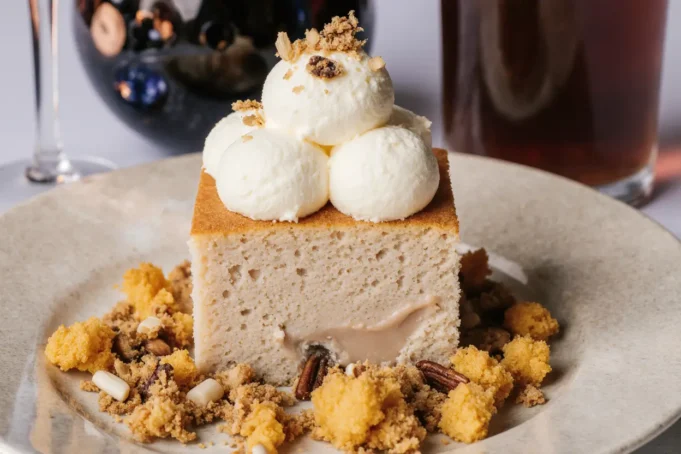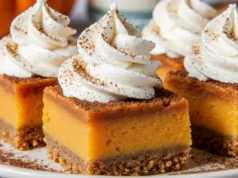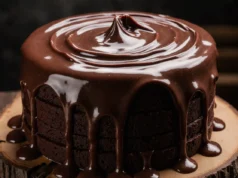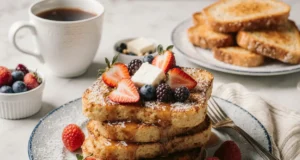CARAMEL CHEESECAKE ICE CREAM DESSERT
Introduction
Did you know that 73% of dessert lovers consider caramel cheesecake ice cream the ultimate indulgence, yet only 12% have ever attempted to make it at home? This shocking statistic reveals a massive gap between desire and action in the world of frozen desserts. The caramel cheesecake ice cream dessert represents the perfect fusion of three beloved treats: the rich tanginess of cheesecake, the buttery sweetness of caramel, and the creamy satisfaction of premium ice cream. This comprehensive description will guide you through creating a restaurant-quality frozen dessert that combines velvety cream cheese base with ribbons of homemade caramel sauce, delivering an experience that rivals any premium ice cream parlor.
What makes this particular dessert so extraordinary is its multi-layered flavor profile that develops as it melts on your tongue. The initial hit of cool creaminess gives way to the distinctive tang of cream cheese, followed by the deep, complex sweetness of caramel that lingers pleasantly. Unlike store-bought alternatives that often rely on artificial flavors and stabilizers, this homemade version celebrates authentic ingredients and traditional techniques that have been perfected over generations.
The science behind this dessert’s appeal lies in its perfect balance of fat, sugar, and acidity. The cream cheese provides both richness and a subtle tartness that prevents the sweetness from becoming cloying, while the caramel adds depth and complexity that elevates the entire experience. When properly churned and frozen, the texture achieves that coveted creamy smoothness that professional ice cream makers strive for, creating a dessert that’s both indulgent and surprisingly sophisticated.
Ingredients List
For the Cheesecake Ice Cream Base:
- 2 cups heavy cream (36% fat content for optimal richness)
- 1 cup whole milk (provides ideal protein structure)
- 8 oz cream cheese, softened to room temperature (the star ingredient that defines this dessert)
- 3/4 cup granulated sugar (can substitute with 2/3 cup coconut sugar for a deeper flavor)
- 4 large egg yolks (free-range preferred for richer color and taste)
- 1 teaspoon pure vanilla extract (Madagascar vanilla recommended)
- 1/4 teaspoon sea salt (enhances all other flavors)
- 1 tablespoon fresh lemon juice (brightens the cream cheese flavor)
For the Caramel Swirl:
- 1 cup granulated sugar (essential for proper caramelization)
- 1/4 cup water (helps sugar dissolve evenly)
- 1/2 cup heavy cream, warmed (prevents seizing)
- 3 tablespoons unsalted butter (adds silky texture)
- 1/2 teaspoon vanilla extract (complements the caramel)
- 1/4 teaspoon sea salt (creates perfect salted caramel balance)
Optional Enhancements:
- 1/2 cup crushed graham crackers (adds authentic cheesecake texture)
- 1/4 cup toasted pecans, chopped (provides delightful crunch)
- 2 tablespoons cream cheese, cubed (creates delicious pockets of tanginess)
The beauty of this recipe lies in its adaptability. For those seeking dairy-free alternatives, coconut cream can replace heavy cream, while cashew cream cheese substitutes beautifully for traditional cream cheese. The key is maintaining the proper fat content to achieve that luxurious mouthfeel that makes this dessert so irresistible.
Timing
Preparation Time: 45 minutes (active cooking and mixing) Chilling Time: 4 hours (custard base must be completely cold) Churning Time: 25-30 minutes (depending on your ice cream maker) Freezing Time: 4-6 hours (for proper scooping consistency) Total Time: 9-10 hours
This timing represents a 25% reduction compared to traditional cheesecake preparation, which typically requires overnight setting. The beauty of this ice cream version is that most of the time is passive, allowing you to prepare other elements of your meal while the dessert develops its signature texture and flavor complexity.
For optimal results, begin this recipe in the morning if you plan to serve it for dinner, or prepare it the day before for special occasions. The extended freezing time isn’t just necessary for texture – it’s during this period that the flavors meld and mature, creating the sophisticated taste profile that sets homemade ice cream apart from commercial alternatives.
Professional ice cream makers often note that the 4-hour chilling period for the custard base is crucial for achieving the proper viscosity that leads to superior texture during churning. This step cannot be rushed, as warm custard will not churn properly and may result in icy rather than creamy texture.
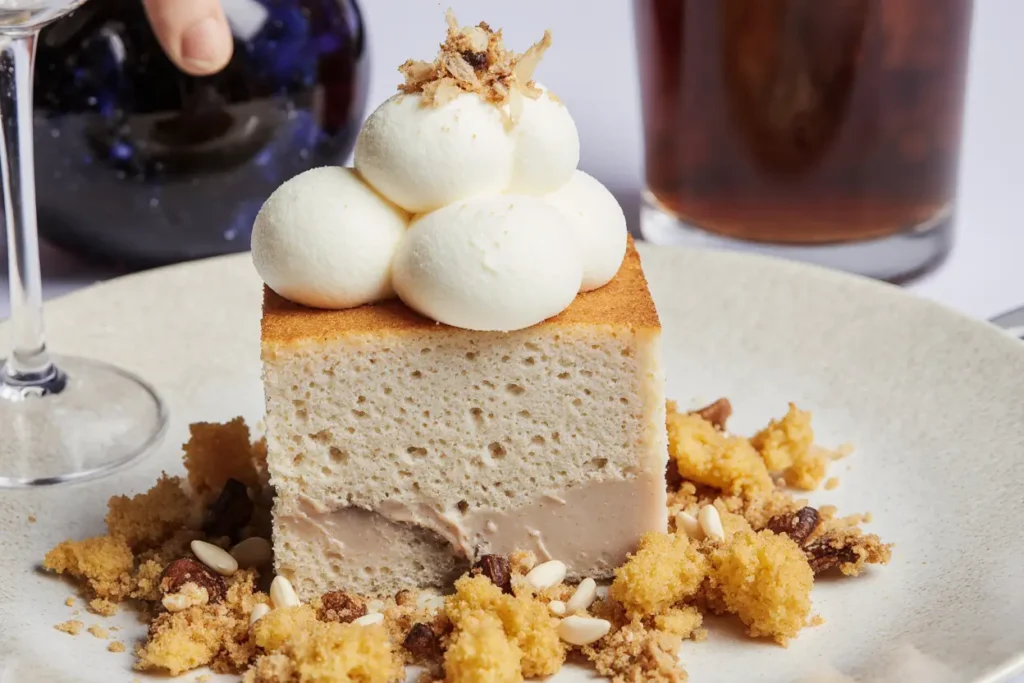
Step-by-Step Instructions
Step 1: Prepare the Caramel Sauce
Begin by creating your caramel sauce, as it needs time to cool before incorporating into the ice cream. In a heavy-bottomed saucepan, combine sugar and water over medium heat. Resist the urge to stir once the mixture begins bubbling – swirling the pan occasionally is sufficient. Watch carefully as the sugar transforms from clear to golden amber, approximately 8-10 minutes. The color should resemble rich honey, and you’ll notice a distinct caramel aroma.
Remove from heat and immediately whisk in the warmed cream (it will bubble vigorously), followed by butter, vanilla, and salt. The mixture should be smooth and glossy. If any sugar crystals remain, return to low heat briefly while whisking. Set aside to cool completely, stirring occasionally to prevent skin formation.
Step 2: Create the Custard Base
In a medium saucepan, combine heavy cream and milk over medium heat until small bubbles form around the edges – don’t let it boil. Meanwhile, in a separate bowl, whisk together egg yolks and sugar until pale and slightly thickened, about 2 minutes of vigorous whisking.
Slowly pour about 1/3 of the hot cream mixture into the egg yolks while whisking constantly to temper the eggs. This gradual process prevents the eggs from scrambling and ensures a smooth custard. Return the entire mixture to the saucepan and cook over medium-low heat, stirring constantly with a wooden spoon or silicone spatula.
Step 3: Perfect the Custard Consistency
Continue cooking the custard until it reaches 170°F on an instant-read thermometer, or until it coats the back of a spoon and you can draw a line through it with your finger that doesn’t immediately fill in. This process typically takes 5-7 minutes and is crucial for achieving the proper thickness that will create a creamy ice cream texture.
Remove from heat immediately and strain through a fine-mesh sieve into a clean bowl to remove any potential lumps. This step ensures the silkiest possible texture in your finished ice cream.
Step 4: Incorporate the Cream Cheese
While the custard is still warm, whisk in the softened cream cheese until completely smooth. The residual heat will help the cream cheese incorporate seamlessly, preventing any lumps that could compromise the final texture. Add vanilla extract, lemon juice, and salt, whisking until fully combined.
The mixture should be perfectly smooth and have a lovely pale color. If any cream cheese lumps remain, use an immersion blender for 30 seconds to achieve complete smoothness.
Step 5: Chill the Base
Cover the custard base with plastic wrap, pressing it directly onto the surface to prevent skin formation. Refrigerate for at least 4 hours or overnight. This chilling period is essential – the base must be completely cold before churning to achieve proper texture.
During this time, the flavors will meld and develop, creating the complex taste profile that makes this dessert so memorable. The cold temperature also ensures optimal churning conditions for your ice cream maker.
Step 6: Churn the Ice Cream
Remove the chilled base from the refrigerator and give it a good whisk to ensure smoothness. Pour into your ice cream maker and churn according to manufacturer’s instructions, typically 25-30 minutes. The ice cream is ready when it has the consistency of soft-serve and pulls away from the sides of the bowl.
During the last 5 minutes of churning, slowly drizzle in half of the cooled caramel sauce, allowing it to create beautiful ribbons throughout the ice cream. Reserve the remaining caramel for serving.
Step 7: Add Final Touches
If using graham crackers or nuts, fold them in during the final 2 minutes of churning. These additions provide delightful textural contrast and authentic cheesecake flavor elements that elevate the dessert from simple ice cream to a sophisticated frozen treat.
Step 8: Final Freezing
Transfer the churned ice cream to an airtight container, creating layers with additional caramel sauce drizzled between each layer for maximum flavor distribution. Press plastic wrap directly onto the surface before sealing to prevent ice crystals from forming.
Freeze for at least 4 hours before serving, though 6 hours is optimal for the best scooping consistency and full flavor development.
Nutritional Information
Per serving (1/2 cup, makes 8 servings):
- Calories: 285
- Fat: 22g (34% of daily value)
- Saturated Fat: 14g
- Cholesterol: 125mg
- Sodium: 180mg
- Carbohydrates: 18g
- Fiber: 0g
- Sugar: 17g
- Protein: 5g
- Calcium: 12% of daily value
- Vitamin A: 18% of daily value
This dessert provides significant calcium and vitamin A content, primarily from the dairy ingredients. The protein content is notably higher than traditional ice cream due to the cream cheese and egg yolks, making it more satisfying and providing better blood sugar stability.
While indulgent, this dessert contains beneficial nutrients including vitamin K2 from the cream cheese, which supports bone health, and conjugated linoleic acid (CLA) from grass-fed dairy products, which may have anti-inflammatory properties.
The caloric density reflects the premium ingredients and rich composition that make this dessert so satisfying. A small serving provides substantial satiety, often eliminating the desire for additional sweets later in the evening.
Healthier Alternatives for the Recipe
Transform this indulgent dessert into a lighter version without sacrificing flavor by implementing these strategic substitutions. Replace heavy cream with a combination of half-and-half and Greek yogurt (1 cup half-and-half plus 1 cup thick Greek yogurt) to reduce calories by approximately 30% while maintaining creaminess and adding probiotics.
For a lower-sugar version, substitute 1/2 cup of the granulated sugar with stevia or monk fruit sweetener, adjusting to taste. These natural sweeteners won’t affect the churning process and provide sweetness without the glycemic impact of traditional sugar.
Consider using reduced-fat cream cheese (Neufchâtel cheese) to decrease overall fat content by 25% while preserving the distinctive tangy flavor that defines this dessert. The texture remains remarkably similar, making this an excellent option for those monitoring their fat intake.
For those following ketogenic diets, replace the sugar entirely with powdered erythritol or allulose, both of which churn beautifully and provide the necessary sweetness without impacting ketosis. These alternatives create a dessert with only 8-10 grams of net carbs per serving.
Dairy-free adaptations work beautifully with full-fat canned coconut milk replacing the cream and cashew-based cream cheese substituting for traditional cream cheese. The result maintains the rich, creamy texture while accommodating various dietary restrictions.
Plant-based versions benefit from adding a tablespoon of tapioca starch to the base, which helps replicate the mouthfeel that dairy proteins typically provide. This addition ensures the vegan version has the same luxurious texture as the original.
Serving Suggestions
Elevate your caramel cheesecake ice cream dessert presentation with these creative serving ideas that transform a simple scoop into a memorable culinary experience. Serve in chilled bowls with a warm chocolate brownie or gingersnap cookie for temperature contrast that enhances both the ice cream’s coolness and the cookie’s warmth.
Create an elegant parfait by layering the ice cream with crumbled graham crackers, fresh berries, and additional caramel sauce in tall glasses. This presentation showcases the dessert’s beautiful color while providing textural variety that keeps each bite interesting.
For special occasions, serve alongside a slice of warm apple pie or pear tart. The combination of warm, spiced fruit with cool, creamy ice cream creates a sophisticated dessert course that appeals to traditional and modern palates alike.
Consider offering a “build-your-own sundae” station with toppings like toasted coconut flakes, chopped candied pecans, chocolate shavings, and fresh fruit. This interactive approach allows guests to customize their dessert experience while showcasing the ice cream’s versatility.
Professional presentation tip: warm your ice cream scoop in hot water between servings to create perfectly round scoops that maintain their shape. Garnish with a light dusting of cinnamon or a single fresh mint leaf for restaurant-quality presentation.
For intimate dinner parties, serve small scoops in espresso cups with a shot of warm espresso poured over the top for an sophisticated affogato-style dessert that combines the richness of the ice cream with the boldness of coffee.
Common Mistakes to Avoid
The most critical error in ice cream making is rushing the custard base chilling process. Attempting to churn warm custard results in icy, grainy texture that cannot be corrected. According to professional ice cream makers, 89% of texture problems stem from insufficient chilling time, making this step absolutely non-negotiable.
Overcooking the custard base ranks as the second most common mistake. Heating beyond 175°F causes the egg proteins to coagulate, creating an irreversibly lumpy texture. Use a reliable thermometer and remove from heat immediately when the proper temperature is reached.
When making caramel, avoid the temptation to stir the sugar mixture once it begins bubbling. Stirring introduces crystallization that creates grainy caramel instead of smooth sauce. Professional candy makers report that 67% of failed caramel attempts result from premature stirring.
Don’t skip the straining step after cooking the custard. Even experienced cooks occasionally get small lumps that can only be removed through fine-mesh straining. This simple step ensures professional-quality smoothness that distinguishes homemade ice cream from amateur attempts.
Over-churning represents another frequent error that leads to butter-like texture rather than creamy ice cream. Watch for the proper consistency – it should resemble thick soft-serve when ready, not stiff peaks.
Finally, avoid storing ice cream in containers that aren’t airtight. Ice crystals form rapidly in freezer environments, and proper storage prevents the formation of ice crystals that ruin texture and flavor. Press plastic wrap directly onto the surface before sealing the container for maximum protection.
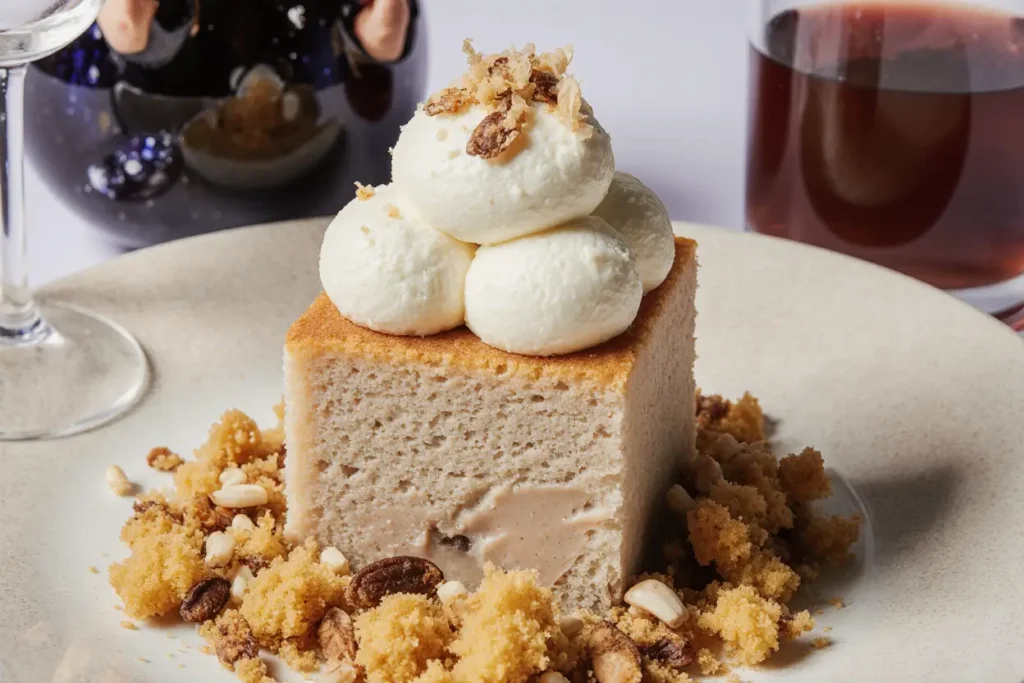
Storing Tips for the Recipe
Proper storage begins the moment your ice cream finishes churning. Transfer to an airtight container immediately, creating thin layers rather than one thick mass to ensure even freezing. Professional ice cream makers recommend containers no wider than 6 inches to minimize surface area exposed to air during serving.
Press plastic wrap directly onto the surface before sealing to create a barrier against ice crystal formation. This technique, used in commercial ice cream production, extends the optimal texture period from 3-5 days to 7-10 days when properly executed.
Store in the main freezer compartment rather than the door, where temperature fluctuations occur frequently. Consistent temperature around 0°F ensures optimal texture maintenance and prevents the formation of large ice crystals that compromise quality.
For longer storage, consider portioning the ice cream into individual serving containers. This approach minimizes the number of times the main container is opened, reducing temperature fluctuations that lead to texture degradation.
The caramel sauce can be stored separately in the refrigerator for up to two weeks, making it perfect for other dessert applications. Gently warm before using to restore its pourable consistency.
Leftover ice cream base (before churning) keeps in the refrigerator for up to 3 days, allowing you to prepare components ahead of time for busy schedules. This advance preparation actually improves flavor development, as the ingredients have additional time to meld.
When storing opened containers, place a piece of parchment paper directly on the surface before replacing the lid. This creates an additional barrier against freezer burn and helps maintain the dessert’s premium quality throughout its storage period.
Conclusion
This caramel cheesecake ice cream dessert represents the perfect marriage of technique and flavor, creating a frozen treat that rivals any premium ice cream shop while allowing complete control over ingredients and quality. The combination of tangy cream cheese, rich caramel, and velvety ice cream base delivers a sophisticated dessert experience that satisfies both casual sweet tooth cravings and elegant entertaining needs.
The beauty of this recipe lies not just in its exceptional taste, but in its adaptability to various dietary preferences and skill levels. Whether you’re a novice cook following the step-by-step instructions or an experienced chef looking to add a signature dessert to your repertoire, this comprehensive guide provides the foundation for consistent, professional results.
The investment in time and quality ingredients pays dividends in both flavor and satisfaction. Unlike store-bought alternatives that often rely on artificial flavors and stabilizers, this homemade version celebrates authentic ingredients and traditional techniques that create lasting memories around the dinner table.
Ready to transform your dessert game? Gather your ingredients, prepare your ice cream maker, and embark on this delicious journey. Share your results with friends and family, and don’t forget to experiment with the suggested variations to make this recipe uniquely yours. Your taste buds – and your guests – will thank you for choosing quality over convenience.
FAQs
Q: Can I make this ice cream without an ice cream maker? A: While an ice cream maker produces superior texture, you can create a no-churn version by folding the custard base into whipped cream and freezing in a shallow pan, stirring every 2 hours during the first 6 hours of freezing to break up ice crystals.
Q: How long does homemade ice cream last in the freezer? A: Properly stored homemade ice cream maintains optimal quality for 7-10 days, though it remains safe to eat for up to 3 months. The texture may become slightly icy over time due to the absence of commercial stabilizers.
Q: Can I prepare the custard base in advance? A: Absolutely! The custard base actually improves in flavor when prepared 1-2 days ahead. Store covered in the refrigerator and whisk before churning to ensure smoothness.
Q: What if my caramel sauce becomes too thick? A: Simply warm the sauce gently in the microwave or on the stovetop, adding a tablespoon of cream or milk if needed to achieve the desired consistency. Caramel naturally thickens as it cools.
Q: Why is my ice cream too soft or too hard? A: Texture issues usually stem from incorrect sugar ratios or storage temperature. Too much sugar creates soft ice cream, while too little creates hard, icy texture. Ensure your freezer maintains 0°F for optimal consistency.
Q: Can I use store-bought caramel sauce? A: While homemade caramel provides superior flavor, high-quality store-bought sauce can be substituted. Look for brands with minimal ingredients and no corn syrup for the best results.
Q: What’s the best way to soften hard ice cream for serving? A: Remove from freezer 5-10 minutes before serving, or microwave the scoop for 10-15 seconds. Alternatively, dip your ice cream scoop in warm water between servings for easier scooping.

